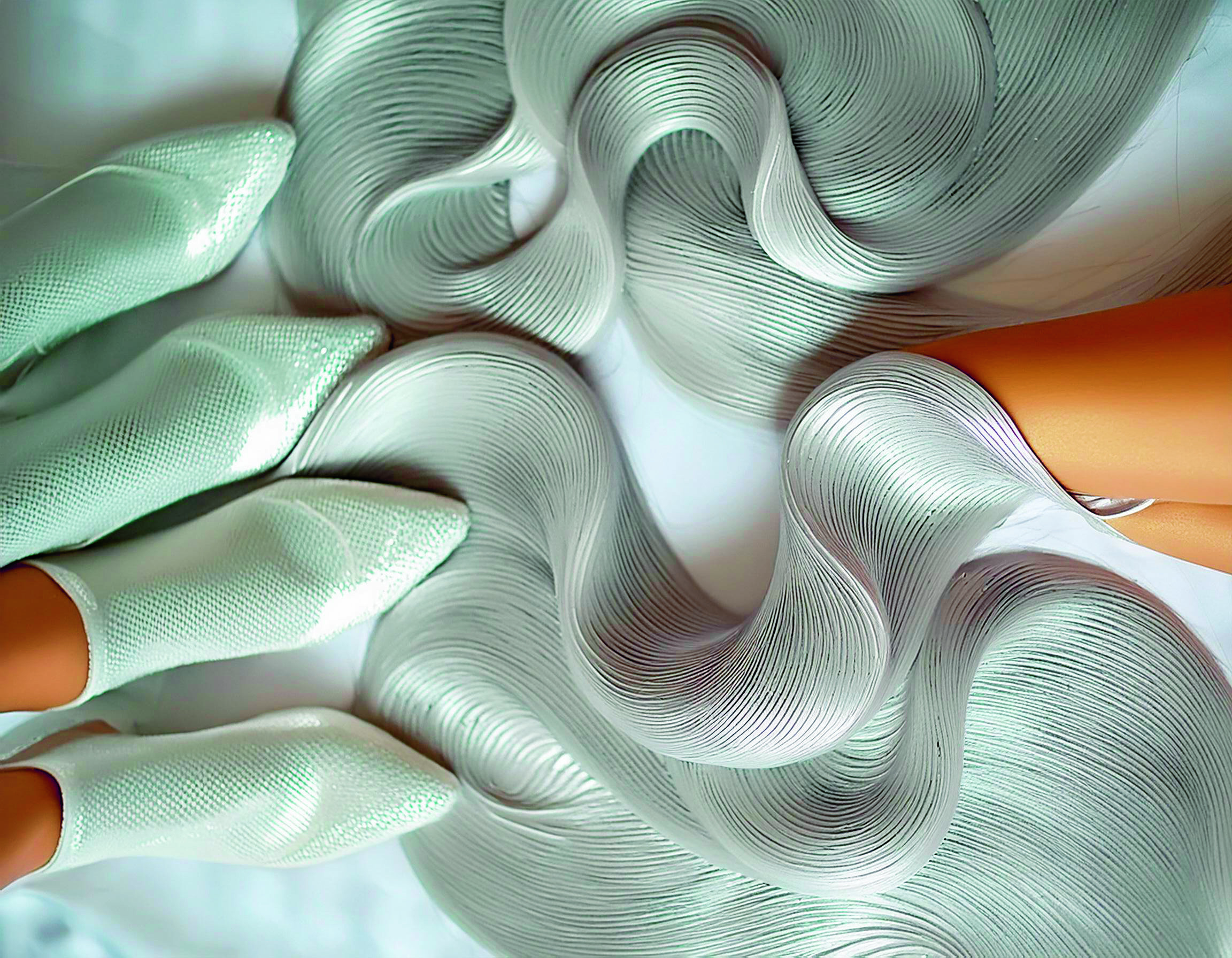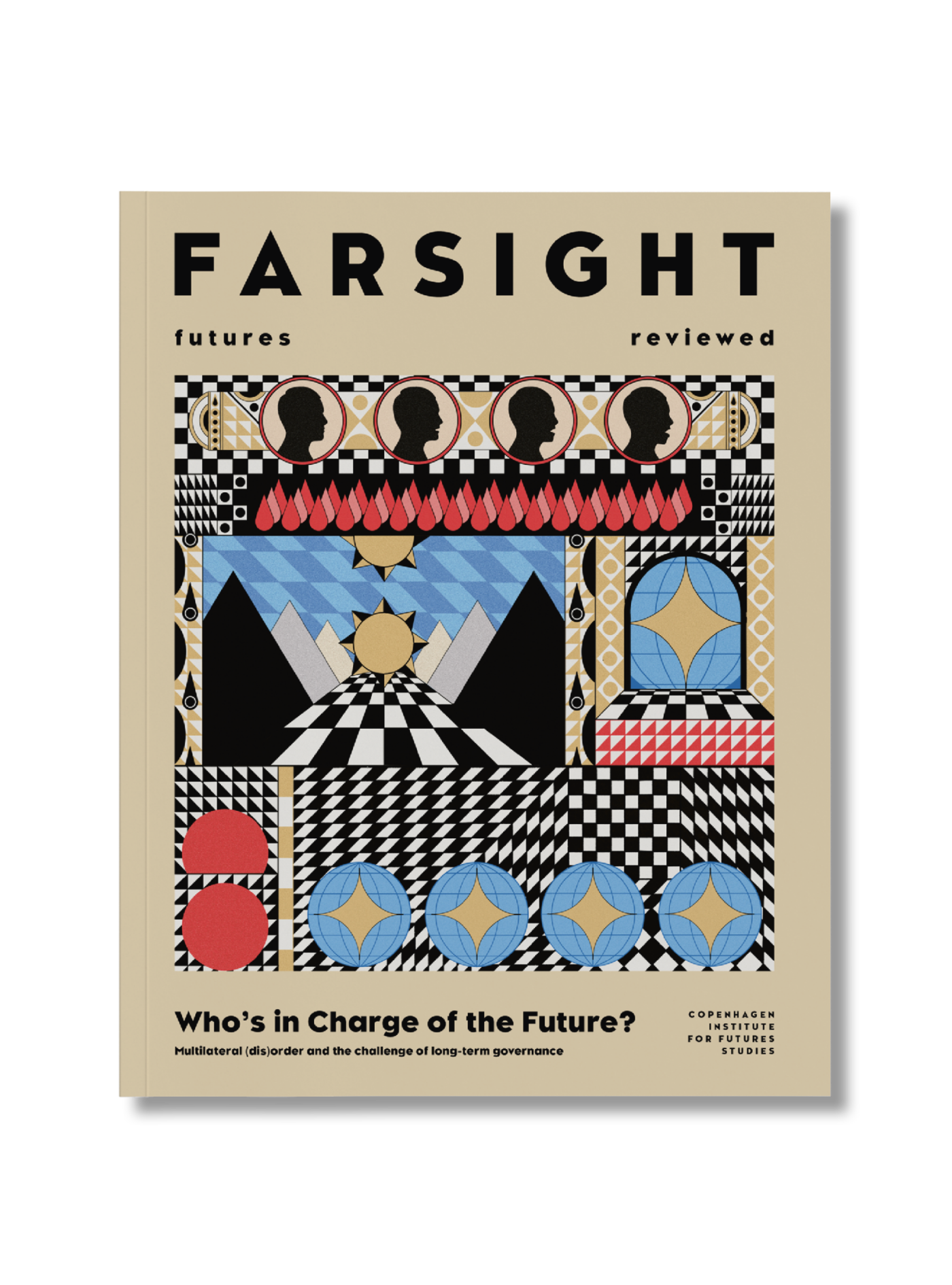
In turn, we use cookies to measure and obtain statistical data about the navigation of the users. You can configure and accept the use of the cookies, and modify your consent options, at any time.

The ubiquity of smartphones and social media has turbocharged visual culture. With the addition of increasingly sophisticated and affordable cosmetic surgeries, beauty standards are pushed into strange new territories.
Image: Adobe Firefly
Last year, I finally caved and got some lip filler, and a touch of botox. After years of professing I wouldn’t fall for the hype, I was undone by the pillowy lips of Swedish social media sensation Matilda Djerf, whose Heather Locklear locks and plump mouth taunted me every time I scrolled through Instagram.
After my session, my lips were definitely bigger, and my brow smoother. What scared me, however, was the casual way in which the doctor suggested I consider getting cheekbone fillers as well (“2mm will do for you, honey”) while she was injecting me. She pointed to the creases on either side of my mouth (also known as laugh lines, or evidence of life being lived well) and suggested a little tweaking and lifting would make my face less “flat”.

Broaden your horizons with a Futures Membership. Stay updated on key trends and developments through receiving quarterly issues of FARSIGHT, live Futures Seminars with futurists, training, and discounts on our courses.
become a futures memberIt was a bizarre experience that left me feeling insecure: until that appointment, I’d never considered my “flat” face or a face lift. All I wanted was a sensuous pout, but I ended up booking another appointment to do the work she suggested. After a few weeks and some intense self-CBT (cognitive behavioural therapy), I cancelled it. In an unexpected turn of events, I’ve since lost most of my desire for cosmetic surgery and have instead started following women on social media who don’t hide their imperfections. These women are beautifully put together and clearly wealthy, but they have pores, uneven skin tone, silver threads snaking through their hair, and sometimes even deeply etched lines around their mouths. They look their age, they look great, and they look human.
As a result, my algorithm has started to change, and Instagram has started throwing up more women who look like, well, real people. And the more I see these pictures, the less insecure I feel about the way I look – and the less I worry about not looking totally perfect.
This is the power of technology. Yes, it can be good, but overwhelming evidence shows that social media is bad for our self-esteem, especially young women’s perception of themselves and their appearance. The spread of social media, and especially highly visual platforms such as Instagram and the filters that fit so neatly into it, have led to ‘The Age of the Instagram Face’, a term coined by New Yorker writer Jia Tolentino, which describes “a single, cyborgian look […] a young face with poreless skin and plump, high cheekbones […] catlike eyes and long, cartoonish lashes; a small, neat nose and full, lush lips.”
This face, she writes, is “distinctly white but ambiguously ethnic”, borrowing the most desirable body parts (of the moment) from different ethnicities. It has the tanned skin of South Americans, the brows and eye shape of South Asians, African American lips, Caucasian nose, and the cheek structure of people from the Middle East and Native America. It is an amalgamation only possible due to the confluence of increasingly sophisticated – and affordable – cosmetic surgery, the ubiquity of smartphones, the invention of social media and advanced technology, which, in turn, has turbocharged visual culture to the point where it is slowly erasing semblances of what we understand it means to look human.
“Our current ideal of beauty, specifically in Western culture at this time in history, means being as divorced from your humanity as possible,” says beauty culture critic Jessica DeFino. She points out that beauty filters and photo editing apps such as Lensa, which generates digital ‘magic’ avatars from selfies, “have almost no human hand in them: they’re cartoon, digital renderings, created entirely by artificial intelligence.”
Humanity has always sought to bend nature to its will. With each technological advancement, we succeed in breaking down more and more natural barriers. Beauty is no different. Having engineered the planet, we have turned our attention to ourselves, using technology to modify our faces and bodies to reflect the mainstream beauty standard of the time, or to differentiate ourselves from it.
Humans, and especially women, have long-since been willing to do anything to reach often-unrealistic beauty standards. Yet, achieving the perfect look has become an ever more extreme endeavour, evolving in tandem with our technologies.
Katherine Frith, professor of journalism at Southern Illinois University, traces the historical development of beauty through three stages by analysing beauty related advertisements from the late 1800s to now. “Beauty has evolved from simple health and hygiene interventions, to makeup and hair products that mask imperfections, to the current surge in make-over cosmetic surgeries that promise to permanently change a woman’s looks,” she says. Over time, we have gone from taking our beauty cues from religion (cleanliness); to advertisements and magazines (cosmetics); to semi-permanent body alternations (social media).
Just a few decades ago the cyborgian look so prevalent today would have been considered extreme by most. Body modifications such as buttock enlargement surgery (also known as the Brazilian butt-lift, or BBL), the fastest growing and most dangerous cosmetic surgery procedure today, were also still in their infancy. The question is, what’s next – and where will we look to get it?
“Across the spectrum, beauty will become something we can manipulate to a far greater extent,” says Arthur Caplan, professor of bioethics at New York University. “The beauty industry is already gigantic: it includes cosmetics, hair, body shaping by surgery, as well as diet and exercise to achieve certain body forms. People can argue that it’s a frill, a waste of resources to spend so much on beauty, and that we should get used to what we look like and move on. Well, it’s never going to happen. We have spent, and continue to spend, trillions of dollars to look better, to meet somebody’s ideal of beauty or perfection,” he says.
Caplan’s research spans bioethics, organ transplants, vaccines, and ‘bioprinting’, a technique that could potentially push body augmentation into strange new territories. He explains the procedure with reference to a young Australian woman who, relatively recently, was fitted with a 3D printed ear made from her own cells. A body part – grown from the tissue derived from the left ear to ensure the ears perfectly matched – was transplanted onto her, constructed in such a way that it would continue to regenerate cartilage tissue, giving it the look and feel of a natural ear.
“A bioprinter that can make a human-like ear can make all kinds of ears,” Caplan suggests. “It could be used to alter body appearance, presentation to others, and to make someone part of a group, a club, a gang, or an association.”

Explore the world of tomorrow with handpicked articles by signing up to our monthly newsletter.
sign up hereTransplants of this kind are still novel. Yet, Caplan believes it won’t be all that long before this medical miracle bleeds into the free market, co-opted and pushed by the multi-billion dollar beauty industry. Don’t like your legs? That’s fine, grow some new ones! What about breasts? Same deal. While bioprinting organs such as skin can be done relatively easily, we’re not there yet with regards to more complex organs such as the liver or the heart. Lab-grown bladders and functional vaginas, however, have already been successfully implanted in patients, and in 2009, a biotech company in San Diego, Organovo, began distributing the first commercially available body-part printer.
“People who use lip fillers now will be able to pump them with their own cells, which won’t be rejected by their body,” Caplan says. “We have limits on what we can do to change our body shape today. We are limited by our metabolism, by how we breathe and our pain, for example. But future technology will expand the boundaries of what can be changed and modified.”
With the spread of increasingly sophisticated virtual and augmented reality technologies, it’s not difficult to see the beauty industry colonising virtual space, too. Fashion brands such as Dolce & Gabbana and Tommy Hilfiger have already staged virtual catwalks, while augmented reality filters, such as L’Oréal’s virtual lipstick try on tool, make it possible for customers to preview products before buying them. And it doesn’t have to stop there: Caplan predicts that as virtual worlds expand and become more complex, more people will choose to ‘live’ there, have relationships, and play with their looks.
“Some people will have multiple appearances in multiple realities: one for when they go to work, another for when they date. Technology will also make virtual reality tactile, conveying senses of smell – everything will be there,” he says. Those who cannot afford to conform to ideals of desirability in the real world may also enter virtual reality to experiment with them there. “You will be able to be an alien, or an animal. The boundaries are limitless.” We have already developed the technology to transform ourselves into fantastical avatars – embodying them virtually is the next step.
Whereas filters were once a plaything, they have now become a tool for people to create the ‘best’ version of themselves in the real world. Women, and increasingly men, are uploading their photos to filters, digitally altering them and then taking these selfies to cosmetic surgeons, asking to be turned into their own virtual avatars. Similarly, AI is increasingly infiltrating online spaces such as pornography sites by replacing porn actresses with ‘perfect’ AI versions. “These characters are not based on real women, yet they are setting the standard of beauty for them,” Caplan says.
Certainly, this virtual existence will no doubt provoke counter-movements. Just as we have seen a rise of naturalist and feminist pornography, which aims to counter the heavily cosmetically altered women featured in mainstream porn, some will increasingly eschew artificiality in favour of nature. Even celebrities such as Kim Kardashian, who painstakingly built her career on oversized backside, lips, and eyelashes, are reversing their procedures in a bid to stand out from their imitators.
As writer Grazie Sophia Christie has pointed out, plastic surgery, once a marker of distinction, has turned into a “uniform suite of cosmetic procedures, popularised by social media, apps, and filters.” By approaching universality, Christie writes, Instagram Face has “secured its role as an instrument of class distinction” as the mark of a certain kind of woman who doesn’t mind looking like others.
As the beauty industry continues to transform the once extreme into the commonplace, it is entirely possible that our bodies – already viewed as machines in need of fine tuning – will eventually become like the “sleeves” of TV show Altered Carbon, a set of parts that can be replaced at whim.
Like today, there will be those who can afford to manipulate their appearance in the physical world, jumping between trends as technology evolves to remove pain, synthesise our cells, and create new organs. Others, whether through lack of opportunity or interest, may choose to remain closer to their original form, rallying against extreme makeovers. Others still might join the ranks of virtual reality to live out their dream selves in an environment that prizes social interaction and creativity rather than physical appearance. A sufficiently meaningful and immersive virtual world could counteract mainstream, cyborg-ian beauty standards, allowing for people to represent themselves through characters and personality rather than based on how much they conform to the current beauty culture.
With Meta currently fighting a lawsuit from dozens of US states who say it is knowingly harming its users by popularising beauty filters, the future of beauty and technology may also go in another direction: offline. As lawsuits like this become more publicised, we may find ourselves in a world where beauty standards will be less defined by unregulated digital social spaces. Yet whatever happens we can be sure the standards will come from somewhere, and that the beauty industry will continue to exist. And technology, without question, will play a significant role in its evolution.

Get FARSIGHT in print!